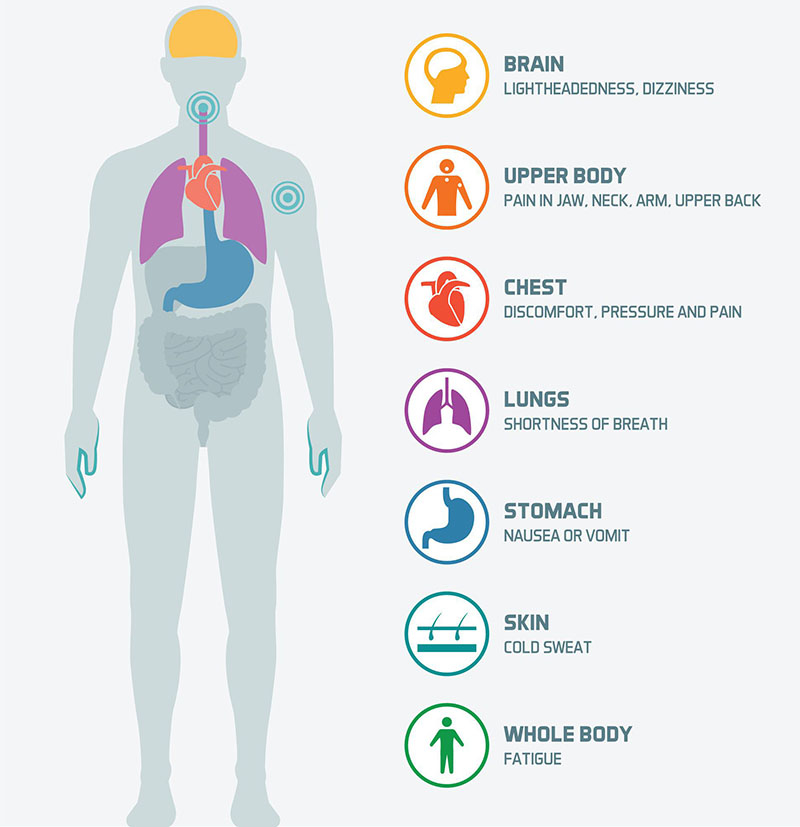
It may also go away and then return. Pain from a heart attack typically feels like vague and non-localizable.

So in case you are showing at least a bit of sign of heart attack the extreme pain goes on for around 15-20 minutes and afterward can wait for quite a while.
Does heart attack pain come and go. Initial heart attack symptoms including chest pain and shortness of breath may come and go. Symptoms often last around 10 minutes or longer. Chest pain and heart attack symptoms.
Chest pain is only one of the possible signs of an impending heart attack. If you notice one or more of the signs below in yourself or someone else call 911 or your local emergency number right away. Uncomfortable pressure squeezing fullness burning tightness or pain in the center of the chest.
Typical heart attack symptoms. Chest discomfort or pain. This discomfort or pain can feel like a tight ache pressure fullness or squeezing in your chest lasting more than a few minutes.
This discomfort may come and go. Early symptoms of heart attack can include the following. Mild pain or discomfort in your chest that may come and go which is also called stuttering chest pain.
Heart attacks usually come on suddenly. Symptoms last longer Usually more than 15 minutes. Angina typically results from stress or exertion.
Symptoms usually go away with rest in about 5 to 10 minutes. The pain from a heart attack may be described as extreme pressure squeezing or fullness. Some victims have no chest pain.
Heart attack pain generally comes on over the course of a few minutes and lasts longer than several minutes. It may also go away and then return. A heart attack is a medical emergency.
Most heart attacks do start slowly. Most involve discomfort in the center of the chest that lasts more than a few minutes or symptoms that go away and come back later over hours or even days as mine did. Cardiac symptoms can feel like uncomfortable pressure squeezing tightness fullness as well as pain.
First Signs of a Heart Attack. Heart attacks dont always come on suddenly and drop you to your knees. In fact many people have heart attacks and dont even realize it carrying on after a quick burst of pain in their back or neck chest or shoulder.
Lasts as long as the exertion period does and is reduced quickly once exertion is finished. Can come and go very quickly and last between a few seconds and a few hours. Heart attack symptoms can vary but the most common signs of a heart attack are.
Chest pain or discomfort that suddenly occurs and doesnt go away. It may feel like pressure squeezing or heaviness in your chest. It can feel like indigestion or a burning sensation.
So in case you are showing at least a bit of sign of heart attack the extreme pain goes on for around 15-20 minutes and afterward can wait for quite a while. For a few people indications can happen months or much longer. Chest pain is a common symptom of heart attack.
IStock Heart attack symptoms vary in both type and severity. Your symptoms may be mild and come on. They can be much more subtle and sometimes begin with warning pains in the chest or other symptoms days or even weeks before the actual attack.
Typically however if youre having a heart attack the severe pain lasts for about 15-20 minutes and then can linger for some time after. Pain from a heart attack typically feels like vague and non-localizable. If your pain has a pinpoint location then it is unlikely to be a heart attack.
Because of how nerves in that area of your body overlap heart-related pain can occur at the left side of. Does heart attack pain chest discomfort left upper shoulder pain right under ear pain come and go. About 2 days ago i was at work physically demanding and a lot of use with both armsshoulders.
While working after a meal i got a shooting intense pain in my left shoulder then an immediate shoot down my right side of neck from under ear. Although in many heart attacks pain can begin in the chest and spread to other areas even when theres no chest pain as an initial symptom heart attack signs may include pain or discomfort in the left right or both arms or in the shoulders elbows back neck throat lower jaw or stomach.